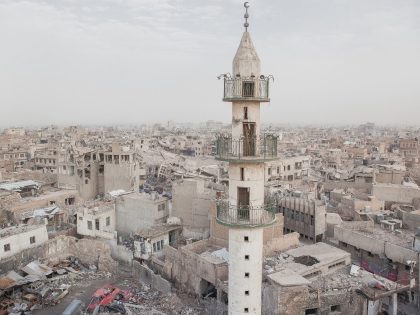Apartheid is a museum no one visits
How much do young South Africans, especially college students, know about their history? Not much, if these videos are any indication.

The Brazilian writer Marilene Felinto and I in June 2002 at the Apartheid Museum in Johannesburg (Photo: Jessica Blatt).
I have been to the Apartheid Museum a few times. An impressive structure, the museum is situated just north of Soweto and south of downtown Johannesburg. It was built next on the complex of a casino and an amusement park. The casino is owned by two white businessmen, brothers Abe and Solly Krok, who sold whitening creams to black people under Apartheid and owns one of South Africa’s most successful football clubs; building the museum was part of a deal to secure the gambling license. Pause and take that all in. It is all very new South African; that is the way old and new elites work together. Not surprisingly, there is a lot wrong with all this history, but today is not the day to go off on them about that. That’s for another time. This time, the Apartheid Museum is doing us a service, though they didn’t intend to do it that way.
Lately, a big issue for the museum is that it is struggling “to attract South Africans and particularly younger South Africans.” So, they hired an advertising firm, TBWAHuntLascaris, to devise a campaign to increase attendance.
This is how advertising people decided to do an experiment. They took to the streets (it looks like the campus of Wits University) to ask young people directly what they knew about South Africa’s recent history and captured it on video. The young people were either asked questions or shown a series of photographs. “We simply asked them to identify a series of famous people. First, popular culture icons and lastly, a famous anti-apartheid leader.”
What stands out is that the pop culture questions are all about global American culture (sample: “Who is the artist known as Slim Shady?” “Who is Beyonce married to?”). This is all deliberate. Those interviewed usually did well on this part of the questions. All the respondents are very confident about knowing who Beyonce and Eminem are. It is when the interviewer drops a question about South Africa’s apartheid history that things get depressing.
I’ve seen four videos – that is what I had access to. I’m not sure if there are more.
In the first video, two sets of interviewees – a young black man followed by two young black women – get all the celebrity questions right. They know who Jay Z, Britney Spears, Oprah, Tiger Woods are and why they’re famous. Then the questioner asks: “The apartheid government stripped him of his chief title.” The correct answer is Chief Albert Luthuli, ANC leader and the first South African to win a Nobel Prize for Peace in 1960. The young black man read the question back as “the anti-apartheid government stripped …” That made his ignorance worse. The two young black women, even after they were offered clues (that Luthuli’s autobiography was called “Let My People Go” and that he was awarded the Nobel), still can’t figure out who he is. One of them deadpans: “Is he South African?” The museum campaign catchphrase “A History Forgotten is a Future Lost” flashes on the screen.
In a second video, the respondent, a young white woman, also gets all the celebrity questions right and then gets asked: “Who coined the antiapartheid slogan ‘Black is Beautiful’?” She responds with “I don’t know” and takes the offer of a clue. She is told this person started the Black Consciousness Movement in South Africa and was assaulted and died in police custody. She can only nervously laugh and say repeatedly, “I don’t know.” Steve Biko’s image flashes on the screen, followed by the campaign’s catchphrase.
Even Oliver Tambo, who was the head of the ANC from the late 1960s through 1991 (take into account that the ANC dominated resistance against segregation and apartheid during the 20th century, so most people in South Africa should know who Tambo was), gets the same treatment. They don’t know who he is.
This is all terrible, of course, but one video really drove me off the cliff.
In the last of the four videos I saw, two young people, one white and one black, are shown the usual photos of celebrities first: They see Che Guevara (he was not a celebrity, of course, though we know where the TBWAHuntLascaris’ researchers would get that idea from), Paris Hilton, Kanye West, Britney Spears, and Chuck Norris.
The young people are then shown an image of Joe Slovo, leader of the ANC’s armed wing, probably the most prominent Communist leader, and later the first Housing Minister in the first democratic cabinet after 1994. They both hesitate, then get confident: “An investor,” an “old man” and described as someone who is “very old.” When offered a clue, the black students even wonder if Slovo is “Verwoerd.” One of the black students then gives up: “I don’t know him.” And when he realizes that’s the wrong answer, he asks: “Are we supposed to know him?”
Hendrik Verwoerd was, of course, Apartheid prime minister from the mid-1950s through 1966 and responsible for making the homelands (bantustan) policy a reality and for deepening segregation before he was murdered by a coloured (black) parliamentary worker, who Apartheid then proceed to paint as crazy. He was voted in with large majorities by white voters and he hated black people and wanted them to be condemned to a life of misery. Joe Slovo was also white but, by contrast, sided with black South Africans and paid a heavy price for it. He is buried in Avalon Cemetery in Soweto, in a graveyard that Apartheid established in the early 1970s as a final segregated resting place for black people around Johannesburg.
TBWAHuntLascaris reports, “… [o]ver 86% of the people interviewed easily recognized the popular figures and failed to identify the South African anti-apartheid leader.”
What are they teaching them at Wits University?



















